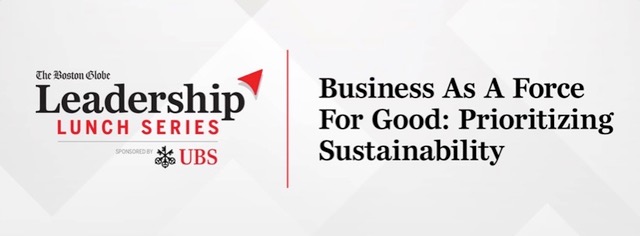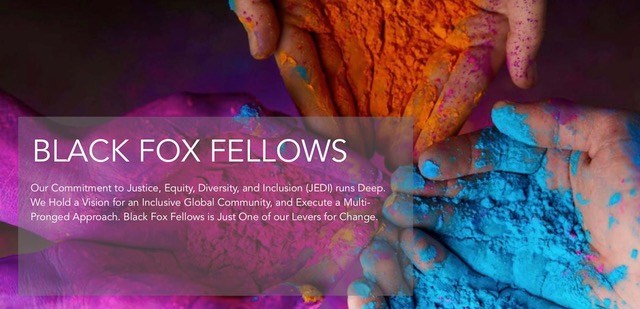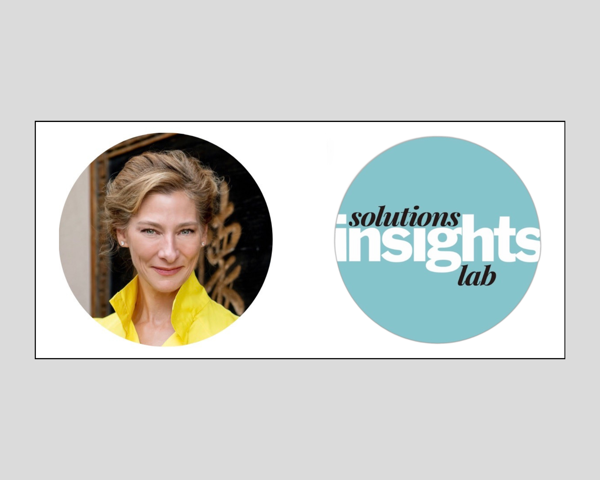Natalie Rekstad, Black Fox Philanthropy’s Founder, participated in this Boston Globe panel to shine a light upon the B Corp movement and business as a force for good.
People increasingly seek to work for, buy from, and invest in companies they believe in. Sustainability is one key area companies can focus on to both build a better planet and benefit workers, the community, and customers. Certifications such as B Corp can measure a company’s entire social and environmental performance and prove a business is meeting the highest standards of performance. In this panel discussion, business executives and analysts will look at some of the certified industry leaders and consider how transparency and accountability requirements inspire a race to the top that benefits everyone.
Below are some excerpts from Natalie’s perspective on ESG and more. View the entire panel discussion here.
Natalie, From your perspective, what is needed to lead a successful company in today’s business climate?
There is so much to say here, so in the interest of time, I’ll focus on the need for clear and compelling values, particularly to do with people. For example, part of a B Corp’s DNA is to have diversity as a core value. That’s important on a number of levels, including the fact that companies who prioritize DEI perform better financially and have greater employee retention and morale. Well-being and well-doing will need to be increasingly intentional as the rising workforce is no longer willing to invest their lives in anything less and refuse to participate in systems that are in direct opposition to their values, and the wellbeing of the whole. Companies that fixate mainly on profit will lose ground to organizations that create a strong identity that meets employees’ need for purpose and meaning.
How do these needs impact intention and community – especially in a virtual world?
When leaders choose – and build – the kind of culture they want the organization to embody, they create a virtuous cycle, attracting the right talent that will thrive in their culture.
We need to be more interconnected, more purposeful – and simply more human.
What are some of the ways organizations should be measuring ESG progress?
Personally, I’m most interested in the social measurement, such as:
- Does it work with suppliers that hold the same values as it claims to hold?
- Does the company invest a percentage of its profits to the communities it serves?
- Do the working conditions, pay structure, and culture show a high regard for its team members and their wellbeing?
- Does it Embody inclusivity and diversity?
How can companies scale up these efforts for maximum impact?
Scaling up has its place but building a solid foundation from which to scale up is vital for true sustainability. This is called SCALING DEEP. This points to the cultural nature of an organization vs. just the policies, which in some instances is more of an overlay to be more attractive to investors.
Scaling deep is putting focus upon cultural roots – with people, relationships, and communities at its center.
I was on a group call and this Mother Teresa quote was shared: “If we have no peace, it is because we have forgotten that we belong to each other.” To scale deep is to acknowledge this fundamental truth.
How has our understanding of the importance of prioritizing ESG evolved in the last decade?
The B Corp movement has been powerful in bringing the conversation into the mainstream, and consumers are more and more intentional about supporting brands that are values-aligned. Even if values are not hardcore to investments, it makes solid financial sense.
One dollar from a consumer’s wallet into the hands of a business is a transfer of power – consumers are more in tune with this and are voting for brands with their money. That gets everybody’s attention.
How can companies integrate ESG into their company culture?
Through leadership embodying the values of the culture it seeks to create.
What about the sustainability of not just companies, but leaders?
Leadership in purpose-driven organizations often demands hard work and long hours, and because the stakes are so high, leaders can burn hot, then burn out.
I’m a bit of a cautionary tale in this — and still flirt with burnout during intense periods. Uncovering drivers toward burnout, including imposter syndrome, is key, as is mindset and approach, and a few good hacks like being a delegating ninja.
One data point I found fascinating is that 49% of entrepreneurs struggle with mental health issues, and this has included myself. These leaders are holding up the sky for so many yet are not getting the support they need to be as effective as the role demands.
A solution: Fostering a culture of acceptance of all team members, including the leadership being seen and able to state what they need.
This was game changing for Black Fox Philanthropy in 2020. We almost doubled in size as a company in the first few months of the pandemic, and so the COO and I implemented a weekly ‘SOS’ score to ensure I was resourced enough to keep moving things forward. We now call it a Wellness score, and in our culture, it has to be a sign of strength to say you need help, because the stakes are so high in light of the missions we serve.Not just for leadership, but for all team members, we have a saying: “Protect the Asset.” It’s a work in progress, always, especially as companies grow and new team members add to the overall fabric of the organization.
How do we protect the assets of our team and their wellness?
The organizational adrenaline that helped many shift quickly and well during the pandemic’s first year has, in many cases, been replaced by fatigue and burnout. We are a relatively small firm, just over 30 team members — the pandemic has impacted people in different ways.
I’m sure there are HR directors out there with better answers than I have, but ensuring team members feel seen, valued, and understood in all their complexity is vital to ensure they are being met where they are, and supported to where they can thrive and do their best work. This can be difficult during times of intensity, but if the underlying culture and intention is there that can go a long way in terms of team members feeling they can ask for what they need.
We were also very proactive: our Pandemic first response – take care of the team. Asking, who is struggling financially? What do you need? How can we help. The response was overwhelming – with team members responding that projects be given to others in greatest need – without fail, they put the wellbeing of others first if they were able to do so.
This brought everyone together in even more profound ways, and it shows up in our culture and in our work. It also influences desirability as an employer – we had over 500 applicants for one of our job postings. A recurring theme was candidates wanted to work for a purpose-driven organization that had a culture of servant leadership.
Investing in sustainability also relates to investing in people. How can we create sustainable teams?
Short answer: Attract the best talent, ensure there is a culture fit, resource them with what they need to do their best work – and ensure the infrastructure is there to support them.
Why do you think it’s important to hold organizations accountable to ESG goals?
The power lies with the consumer. If we are holding organizations accountable with our consumerism or vendor choices, then harmful business practices cannot be sustained.
Why do you think large organizations in particular have a responsibility to prioritize ESG?
The stakes are just so high. If large organizations continue with harmful practices, we as a society suffer, or potentially even perish.







